1. 5% increase in customer retention can increase business profits by 25% - 125%
[Ref: Gartner Group and "Leading on the Edge of Chaos", Emmett C. Murphy and Mark A. Murphy]
World-class customer experience needs to be created at every point of contact. This is required to secure retailer's survival for future generations. They have no choice but to join the Big Data revolution.
[Ref: Gartner Customer 360 Summit 2014]
2. 68% of customers leave you because they perceive you are indifferent to them
[Ref: http://www.retentionofcustomers.com/Customer_Retention_Ideas_Report_DC_Version.htm]
3. 93% of adult Americans said that a company's reputation for honesty & fairness is extremely important to them
[Ref: Gallup poll for the Better Business Bureau 2007]
4. Companies that applied data driven outperformed peers by 85% in sales growth and more than 25% in gross margin during a recent one-year period (On control group of 10 companies)
[ref: Gallup research]
5. Companies that prioritize the customer experience generate 60% higher profits than their competitors
[Ref: Gartner Group and "Leading on the Edge of Chaos", Emmett C. Murphy and Mark A. Murphy]
6. Only 14% of marketing leaders deliver personalization across channel. There is huge potential of growth.
[Ref: Forester research]
7. 83% of the retailers believe that consumer behavior can be influenced by future marketing efforts focused on combination of mobile, websites, applications and social media channels.
[Ref: Forester research]
8. Email, call centers, and websites are the key customer interaction channels today. But future lies across all channel - interaction including Mobile.
[Ref: Forester research]
9. 86% of US & European consumers say their trust in corporations has declined over the last 5 years
[Ref: Cited in "A Complaint is a Gift" ]
10. Satisfied customers tell 9 people how happy they are
[Ref: http://www.allbusiness.com/sales/customer-service/1096122-1.html]
11. A commitment to customer experience results in up to 25% more customer retention and revenue than sales or marketing initiatives
[Ref: Gartner Group and "Leading on the Edge of Chaos", Emmett C. Murphy and Mark A. Murphy]
12. 80% of your future profits will come from just 20% of your existing customers
[Ref: Gartner Group and "Leading on the Edge of Chaos", Emmett C. Murphy and Mark A. Murphy]
13. Repeat customers spend 33% more than new customers
[Ref: Laura Lake]
14. Average dissatisfied customer will tell 11 others about their experience
[Ref: The Sydney Entrepreneur Centre]
15. Research shows that company spends on improved customer service, see a return on investment of 34% to a massive 400%
[Ref: www.sarocks.co.za]
16. A 5% increase in customer retention can increase a company's profitability by 75%
[Ref: http://www.bain.com/bainweb/Consulting_Expertise/capabilities_detail.asp?capID=102]
17. Most consumers are not pre-decided about their purchase and visit retail stores with ambiguity in mind. Their shopping habits influenced by 61 percent once they entered store. 32 percent of shoppers change their mind about purchasing items while researching via mobile while they are present inside store.
[Ref: Tradedoubler Research]
>
18. 80% of companies believe they deliver a superior customer experience, but only 8% of their customers agree
[Ref: Bain & Company from Harvard Management Update]
Marketers Must Overcome Personalization Challenges To Drive Results
Marketers consistently agree that increased personalization has the potential to drive revenue, conversion rates, and other key business metrics. However, they are not consistently able to personalize experiences across all channels.Furthermore, they are currently less capable of bringing personalization to newer channels such as mobile and social media. More specifically, they told us that:
Personalization has the potential to increase traffic, conversions, and average order value. Surveyed marketers currently believe that personalization capabilities can improve a variety of business metrics. More specifically,75% of respondents stated that personalization could have a significant or very significant impact on their customer retention rate, 75% said the same about lifetime customer value, and 71% gave the same rating to conversion rates (see Figure 1).
Technology constraints frustrate today's personalization. Survey respondents bemoaned the fact that customer-specified preferences and past interaction history alone drive current personalization capabilities. Specifically, 80% of marketers stated that they currently use only customer-specified preference data to personalize customer experience on some or all channels.
Marketing Leaders Long For Contextually Sensitive Personalization
Our respondents described their aspirations to offer more contextually sensitive real-time personal experiences in the next few years. We heard that senior marketing executives:
Focus current personalization initiatives on customer-specified preferences and past interaction history. Customer-specified preferences are the leading method of personalization; 80% of marketing executives currently use them in some or all interaction channels. In addition, 68% of marketers,personalize current customer interactions based on past customer interaction history. Other commonly used personalization methods used by nearly 60% of firms in some or all of their interaction channels are based on the time of day or day of the week of customer interactions.
Expect a huge rise in personalization using consumer's emotional state, social media sentiment, and context. Only 29% of respondents claim today to use inferences about the consumer's emotional state in some or all channels. But 53% expect to do this in two to three years' time. Only 52% of marketers currently use sentiments that consumers express in social media to personalize interactions today, but fully 79% expect to do this in two to three years. In addition, only 54% capitalize on the consumer's current contextual behavior, but 77% expect to do so in two to three years' time.









